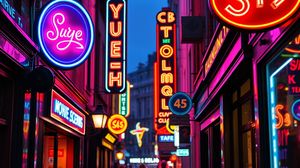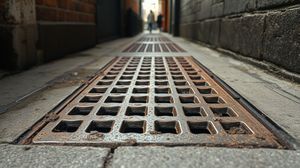
Located in the heart of Soho, Karl Marx's blue plaque marks a significant historical site at 28 Dean Street where the German philosopher and revolutionary socialist lived between 1851 and 1856. This location is one of the many addresses in London where Marx resided during his years in the city, offering a glimpse into the life of the man whose ideas would shape much of the 20th century political landscape.
During his time at 28 Dean Street, Marx worked on several of his important writings, including the early ideas that would later form his magnum opus, "Das Kapital." This makes the plaque not just a marker of residence but a reminder of where one of the world's most influential economic theories began to take shape.
An interesting yet little-known fact about this location is that it was also within walking distance of the British Museum, a place Marx visited frequently to study and conduct research due to its extensive library. The proximity greatly facilitated his scholarly activities, underscoring the area's pivotal role in his intellectual development.
Another intriguing aspect of Marx's life at Dean Street was the presence of his family, who lived in challenging conditions despite his later fame. The Marx family often experienced financial hardship, which is notable given Marx's critique of capitalism and exploration of class struggles. This detail adds a personal dimension to the historical narrative encapsulated by the plaque.
The blue plaque itself is part of a wider scheme run by English Heritage to commemorate notable figures and their links to particular places across London. It symbolizes Marx's significant ties to the city, serving as a touchpoint for those interested in the life and works of a man who has remained a figure of considerable debate and discussion.

Making the Most of Your Visit:
When you visit Karl Marx's Blue Plaque on Dean Street, remember you're standing in a place filled with history that's easy to overlook amidst the bustle of Soho. The plaque is unassuming, so you might walk right past it if you're not looking up!
The building at 28 Dean Street is part of a vibrant area with a mix of historic charm and modern flair. Take a moment to imagine what life might have been like here in Marx's time, with the busy streets and diverse community providing a backdrop to his revolutionary thinking.
While the plaque itself is a small marker, the significance lies in the story; so immerse yourself in the context. Consider the proximity to the British Museum, just a fifteen-minute walk away, which was a crucial resource for Marx during his time in London. After checking out the plaque, you might want to head there and explore the Reading Room where he spent countless hours.
Soho in the mid-19th century was a hub of social and political activity, often with an air of intrigue. While standing at Dean Street, imagine the intellectual exchanges that took place and the conditions Marx and his family lived under. It adds a layer of empathy and understanding to your visit.
If you're interested in the broader history of Marx in London, consider visiting other nearby sites connected to his legacy. There are other plaques and landmarks around the city that tell the wider story of his life and influence, giving you a more rounded picture of his time here.

Visiting Times & Costs:
Karl Marx's Blue Plaque in Soho is located on a public street, making it accessible to the public at all times. There is no entrance fee to view the plaque as it is an exterior marker. Visitors can view it freely without any cost, and it can be enjoyed regardless of the time of year or day.
While there are no specific accessibility issues related to viewing the plaque itself, as it is mounted on the outside of a building, it's important to note that the streets in Soho can be narrow and busy, which may pose challenges for those with mobility concerns.

Address & Map:

Nearby:























